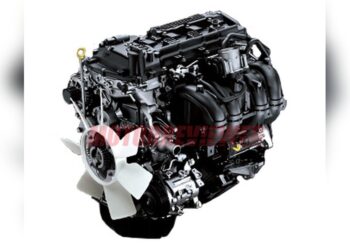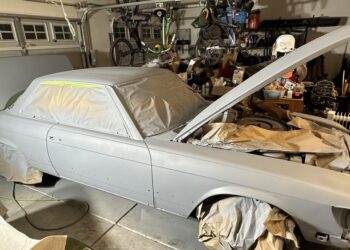Seeing the brake light and ABS light on, and the speedometer not working, can be alarming. These issues could mean serious problems with your car.
Understanding why these lights are on and the speedometer is not working is important. This can help you figure out the next steps. These problems can affect your car’s safety and performance. They might be due to electrical issues, sensor failures, or other faults.
Knowing the possible causes helps you take quick action. This blog will guide you through the common reasons for these issues. We’ll also discuss how to address them. So, let’s dive into what might be going wrong with your car.
Common Causes
Having issues with your brake light, ABS light, and speedometer can be frustrating. These problems often point to underlying issues. Understanding these common causes can help you diagnose and fix the problem.
Electrical Issues
Electrical issues often cause problems with brake lights, ABS lights, and speedometers. A blown fuse can disrupt the electrical system. This can lead to malfunctioning lights and gauges. A faulty wiring harness can also cause similar issues. Wires can become damaged or disconnected over time. This affects the signals sent to your car’s systems. Ensure all connections are secure and wires are intact.
Sensor Failures
Sensor failures can also cause these problems. The speed sensor measures how fast your car is going. If this sensor fails, the speedometer will stop working. The ABS relies on wheel speed sensors. These sensors monitor the speed of each wheel. A faulty wheel speed sensor can trigger the ABS light. Brake lights depend on the brake light switch. If this switch fails, the brake lights won’t work. Regularly check and replace faulty sensors to ensure everything works properly.
Diagnosing The Problem
When your brake light and ABS light come on and your speedometer stops working, it can be frustrating. Understanding the root cause of these issues is crucial for fixing them. Diagnosing the problem involves a few steps that anyone can follow. Let’s break down the process to help you get your car back on the road.
Using Diagnostic Tools
Modern cars have onboard diagnostics (OBD) systems. These systems store error codes that help pinpoint issues.
- Purchase or borrow an OBD-II scanner.
- Connect the scanner to the car’s OBD port, usually found under the dashboard.
- Turn on the scanner and your car’s ignition.
- Read the error codes displayed on the scanner.
These codes can indicate specific problems. For example, codes related to the ABS system or speed sensors. Always refer to your car’s manual or look up the codes online for detailed information.
Visual Inspection
Sometimes, a visual inspection can reveal the issue. Follow these steps:
- Check the brake fluid level. Low fluid can trigger the brake light.
- Inspect the ABS sensors. They are usually located near the wheels.
- Look for damaged wires or connectors. These can cause the ABS light to come on.
- Examine the speed sensor. It is often found on the transmission.
Visual inspection can often identify obvious issues like fluid leaks, broken wires, or loose connectors. Fixing these can sometimes resolve the problem without further steps.
Fixing Electrical Issues
Electrical problems in your car can be frustrating. Especially when multiple systems fail. Brake lights, ABS lights, and the speedometer are crucial. They ensure safe driving. Let’s explore how to fix these electrical issues.
Checking Fuses
Fuses protect your car’s electrical components. They prevent damage from power surges. First, locate the fuse box. It is usually under the dashboard or hood. Check the owner’s manual for the exact location. Remove the fuse box cover. Look for the brake light and speedometer fuses. They are labeled on the cover.
Inspect each fuse carefully. A blown fuse has a broken wire inside. Replace any blown fuses with new ones of the same rating. Ensure all fuses are seated properly. Test your car after replacing the fuses. If the problem persists, proceed to the next step.
Inspecting Wiring
Wiring issues can cause multiple electrical failures. Start by examining the wiring near the affected components. Check the brake light wiring first. Look for any visible damage or loose connections. Repair any damaged wires immediately.
Next, inspect the ABS wiring. Follow the wires from the ABS sensors to the control module. Ensure all connections are tight and clean. Look for any signs of corrosion or wear. Fix any issues you find.
Finally, check the speedometer wiring. Trace the wires from the speed sensor to the dashboard. Inspect for any breaks or frayed wires. Repair or replace damaged wiring as needed. After inspecting and repairing the wiring, test your car again. The issues should be resolved.

Credit: www.reddit.com
Dealing With Sensor Failures
Sensor failures can cause serious problems in your vehicle. You might notice the brake light and ABS light on, and the speedometer not working. These issues often stem from faulty sensors. Addressing these problems promptly is crucial for your safety and vehicle performance.
Replacing Speed Sensors
Speed sensors play a vital role in your car. They help the speedometer show the correct speed. If the speed sensor fails, the speedometer may stop working. First, locate the sensor, which is usually near the transmission. Disconnect the sensor and remove it. Replace it with a new one and reconnect it. This should solve the speedometer issue.
Repairing Abs Sensors
ABS sensors monitor wheel speed to prevent skidding. A faulty ABS sensor can trigger the ABS light. To fix this, locate the ABS sensor on each wheel. Check for dirt or damage. Clean the sensors carefully and make sure the connections are tight. If cleaning does not work, you may need to replace the sensor. This should turn off the ABS light and restore your braking system’s function.
Resetting Warning Lights
Resetting warning lights can solve issues like a brake light, ABS light, and a non-working speedometer. This process can be done using an OBD-II scanner or manual methods. Here’s how you can reset these warning lights and get your car back to normal.
Using An Obd-ii Scanner
An OBD-II scanner can help reset warning lights. First, locate the OBD-II port in your car. This port is usually under the dashboard. Plug the scanner into this port.
Turn on your car’s ignition, but do not start the engine. The scanner will power up. Follow the scanner’s instructions to read the codes. Write down any codes that appear for future reference.
After recording the codes, use the scanner to clear them. This action will reset the warning lights. Turn off the ignition and remove the scanner. Start your car to see if the lights are off.
Manual Reset Methods
If you don’t have an OBD-II scanner, you can try manual methods. Disconnect the negative battery cable. Wait for about 15 minutes. This waiting period allows the car’s system to reset.
Reconnect the battery cable and start the car. Check if the warning lights are off. If they are still on, consult your car’s manual for specific reset instructions.
Some cars have a reset button for the ABS system. Check your car’s manual to find this button. Press and hold it for a few seconds. This action can reset the ABS light.
Maintaining Your Vehicle
Maintaining your vehicle is essential for ensuring it runs smoothly and safely. Regular checks and repairs can prevent issues like the brake light and ABS light turning on or the speedometer not working. By keeping up with car maintenance, you ensure your vehicle stays reliable. Here are some important aspects of vehicle maintenance you should consider:
Regular Inspections
Regular inspections are key to identifying potential problems early. Check your car’s lights, brakes, and speedometer regularly.
- Inspect the brake system for wear and tear.
- Ensure all lights are functioning correctly.
- Check the speedometer for accurate readings.
These inspections help catch minor issues before they become major problems.
Preventive Maintenance
Preventive maintenance involves routine servicing to keep your vehicle in good working condition.
| Maintenance Task | Frequency |
|---|---|
| Oil Change | Every 5,000 miles |
| Brake Inspection | Every 10,000 miles |
| Tire Rotation | Every 6,000 miles |
Following a preventive maintenance schedule can help extend your vehicle’s lifespan and improve its performance.
When To Seek Professional Help
Seeing brake light, ABS light on, and a non-working speedometer? It may be time to consult a professional mechanic. Ignoring these signs can risk your safety and lead to costly repairs.
When your brake light and ABS light are on, and the speedometer is not working, seeking professional help may be necessary. Understanding when to consult an expert can save time and prevent further damage.Identifying Complex Issues
Sometimes, the issues with your brake light, ABS light, and speedometer are complex. These problems often involve the vehicle’s electrical system or control modules.Here are some signs that the issues might be complex:
- Multiple warning lights on the dashboard
- Intermittent working of speedometer
- Unusual noises when braking
Choosing A Reliable Mechanic
Finding a reliable mechanic is crucial for resolving these issues. Look for mechanics with certifications and good reviews.Consider the following when choosing a mechanic:
| Criteria | Description |
|---|---|
| Certifications | Check for certifications like ASE (Automotive Service Excellence). |
| Experience | Years in service and expertise with your car model. |
| Reviews | Read customer reviews and ratings online. |

Credit: www.reddit.com
Tips For Avoiding Future Issues
Experiencing issues with your brake light, ABS light, and speedometer can be alarming. Maintaining your vehicle is crucial to avoid these problems in the future. Here are some practical tips to help you prevent similar issues down the road.
Proper Driving Habits
Adopting proper driving habits can significantly reduce the likelihood of encountering brake light and ABS light issues. Here are some key habits to follow:
- Avoid sudden stops and harsh braking.
- Keep a safe distance from other vehicles.
- Drive at consistent speeds.
- Regularly check your mirrors and blind spots.
Regular System Checks
Conducting regular system checks ensures that your vehicle remains in top condition. Follow these steps to keep everything running smoothly:
| System | Recommended Check Frequency |
|---|---|
| Brakes | Every 6 months |
| ABS | Every 6 months |
| Speedometer | Annually |
Proper Maintenance
Regular maintenance is key to avoiding issues with your vehicle’s systems. Follow these tips:
- Check brake fluid levels monthly.
- Inspect brake pads every 6 months.
- Look for signs of wear on brake rotors.
- Ensure your ABS sensors are clean and functioning.
- Make sure the speedometer cable is intact.
By following these tips, you can help prevent future issues and keep your vehicle safe.

Credit: www.reddit.com
Frequently Asked Questions
Why Are My Brake Light And Abs Light On?
Your brake and ABS lights may be on due to sensor issues, low brake fluid, or a malfunctioning ABS module.
What Causes The Speedometer To Stop Working?
A faulty speed sensor, damaged wiring, or a malfunctioning speedometer can cause the speedometer to stop working.
Can I Drive With The Abs Light On?
Driving with the ABS light on is not recommended. It indicates a problem with your ABS system.
How Do I Fix A Non-working Speedometer?
Check the speed sensor and wiring. Replace any damaged parts to fix the speedometer.
Is It Safe To Drive With Brake And Abs Lights On?
No, it is not safe. These lights indicate potential brake system issues. Get your vehicle checked immediately.
Conclusion
Addressing brake light, ABS light, and speedometer issues is essential. Ignoring them can lead to serious problems. Regular maintenance helps avoid these issues. Consult a professional if unsure. Timely repairs ensure safety and smooth driving. Always stay proactive with car care.
Your vehicle’s performance depends on it. Prioritize these checks for a stress-free drive. Stay safe on the road.

















